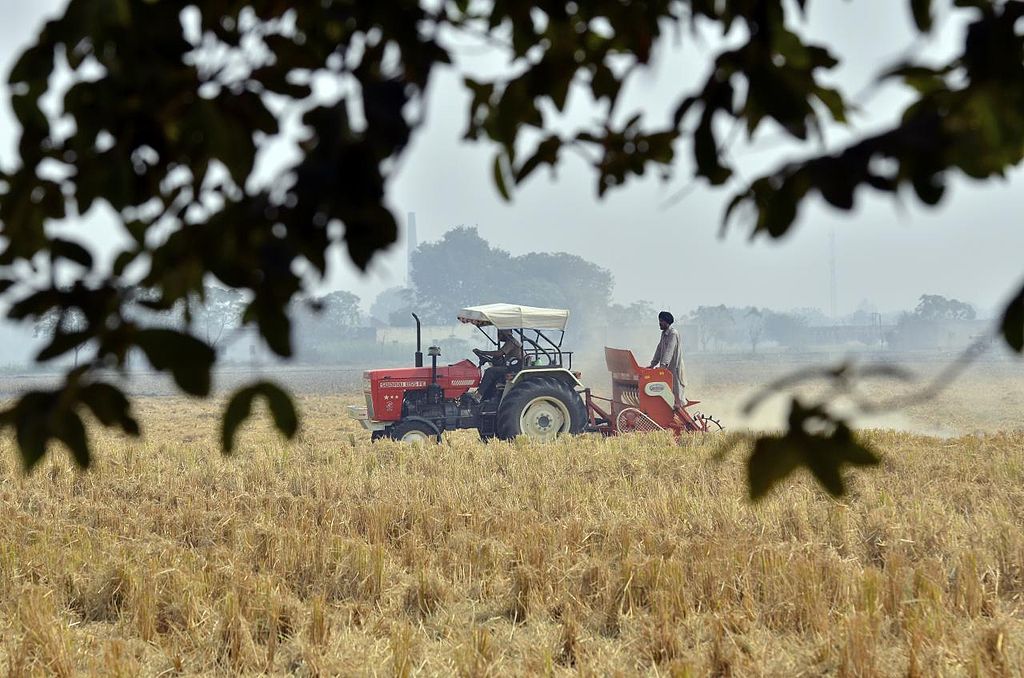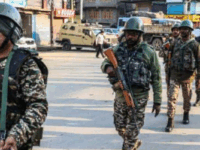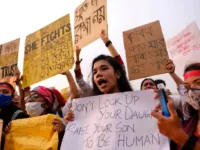After the ‘Tractor Parade’: Escalate Joint Workers’ and Farmers’ Protests!

Every Indian child grows up singing and learning the slogan ‘Jai Jawan, Jai Kisan’ at school. It means: ‘long live the soldier, long live the farmer’. At the moment these two groups, that are said to form the backbone of Indian society, stand eye to eye. The farmers’ movement is the biggest in recent history and has a broad support among workers. They are the ones who in India are referred to as ‘Ann Daata’, or the providers of food for the nation. The farmers are determined to continue their movement to protest against the government. Despite the blistering cold they have no other choice: it is about defending their livelihood that is put at risk by capitalism.
How it started: the three laws
The central government of India passed three laws that brought the farmers onto the streets in protest:
- The Farmers’ Produce Trade and Commerce Act
- Farmers Agreement on Price Assurance and Farm Services Act
- The Essential Commodities Act
The government claims that these laws will increase the income of the farmers and help develop agricultural productivity by bringing in private investment and by bringing the farmers into global market supply chains. The farmers however are reluctant towards the big corporations and what is presented as the ‘next green revolution’.
Most of the Indian farmers trade with the private sector and face a difficult struggle to survive with a big debt burden. The most successful and wealthiest farmers in India come from the states of Punjab and Haryana in the north. This is partly due to the existence of the Agriculture Produce Market Committee (APMC), known as the Mandi-system. This is a form of government regulated system with local markets where farmers can sell for a minimum price. This Minimum Support Price (MSP) is higher than regular free market prices. Opening up the market for big corporations will introduce new middle men and allow the big corporations to set the prices according to their own profit margins.
While the government says the MSP will remain in place and while it is not excluded that the big corporations at first will pay more for the harvest, in the longer run it inevitably will undermine the APMC with buyers not having to take part in the publicly-controlled market. It furthermore will give big corporations more opportunities to bankrupt local shop owners all over India, through competition by establishing temporarily lower prices of the corporations that want to control the retail sector. Lower prices will put the farmers under even bigger pressure. Heavily indebted with high interest rates, they will be completely dependant on the corporations.
Farmers move into action
The farmers started to organize their protests immediately. Farmers’ unions and groups of farmers went to the villages to explain the measures and the need for protest. They decided that enough was enough and announced a march on the capital city, Delhi. Thousands participated in this march, but were stopped at the border of Delhi by police and military. The authorities used the pretext of Covid-19 for this. In the blistering cold, the farmers were met with water cannons and tear gas, but they continued and started protest camps at the border of Delhi. Through the farmers’ unions and the broad solidarity existing among the population, the participants of these camps receive food and clothing from their villages.
In Punjab, one of the strongholds of this movement, a committee was set up in nearly every village. These committees decide which farmers go to the protest site, alternating weekly. The farmers that stay behind arrange food and clothing for the ones going to the protest sites and take care of their families. On this basis, it is possible to continue the movement over a longer period. It also shows the strength of collaboration between the farmers.
Initially, the government alleged that the farmers’ protest was based on leftist propaganda or even invoked the national question, especially concerning the Sikh farmers from Punjab. This didn’t work: the movement spread throughout India and even farmers in the ranks of the far-right RSS party started to join the protests. The dynamic of class struggle overcomes the divisions touted by the government.
What lies ahead
The movement has broad support. Trade unions representing the working class, including in the banking sector and the taxi-drivers, joined a massive general strike with 250 million participants on 26 November. This helps to create a stronger class consciousness. The farmers’ struggle strengthened the workers’ strike and vice versa.
At the same time there is international pressure on the government, through support for the movement from Indian communities in countries like Canada. The government had to soften its stance, agreeing to a new dialogue but at the same time it remains unwilling to withdraw the laws. The Supreme Court decided to suspend the laws, putting more pressure on the government.
The movement now has to continue. The farmers decided to scale up the protest with a tractor parade during Republic Day celebrations on 26 January. The Supreme Court refused to ban this protest. With thousands of tractors, the farmers defied police repression and entered the capital city of Delhi, some of them occupying the Red Fort. The government tries to present this as riots with the farmers using violence, but support for the movement remains very high. The BJP government attacked the protesters, also blocking internet access around the main protest sites, but at the same time had to announce that it is prepared to suspend the three laws (which are already suspended by the Supreme Court’s decision).
The 26 January day of action and the continuing protests must be followed by new general mobilisations of the farmers and the workers to bring down the laws and all the policies that attack ordinary people for the sake of corporate profits. A call for actions in as many cities as possible with farmers and workers supporting eachother’s struggle while also defending their own demands, would be a good next step to mobilize the broad support the farmers have won at the present time. The workers’ movement must play an active role as they have the economic power to stop everything by using the weapon of the strike.
The Mandi-system has suffered in the past years, but shows its importance in the states of Punjab and Haryana, known as the bread basket of India. To justify its attack, the government says 96% of the farmers already trade with the private sector. The public market system needs to be strengthened instead of being weakened in the interests of the big corporations. A public market with guaranteed minimum prices is necessary for the survival of more than 170 million families active in agriculture. The government spends huge amounts to support big companies during the pandemic, but shows less interest in the millions of farmers. Why not use our tax money to support the farmers and generate more technological advancement in agriculture, under the control of the farmers and wider society?
The struggle against the farming laws is against the application of capitalist policies in agriculture. These policies are not in the interests of the farmers nor in the interests of the working class. This huge movement shows a growing class consciousness. This can be used to step up the demands for better living standards and control by the farmers and the workers movement over the production and distribution of food. Capitalism is suffocating the farmers, who used to be called the pride of the nation. Through united action the working class and the farmers can strengthen their forces to break with capitalism and to develop a socialist alternative.





